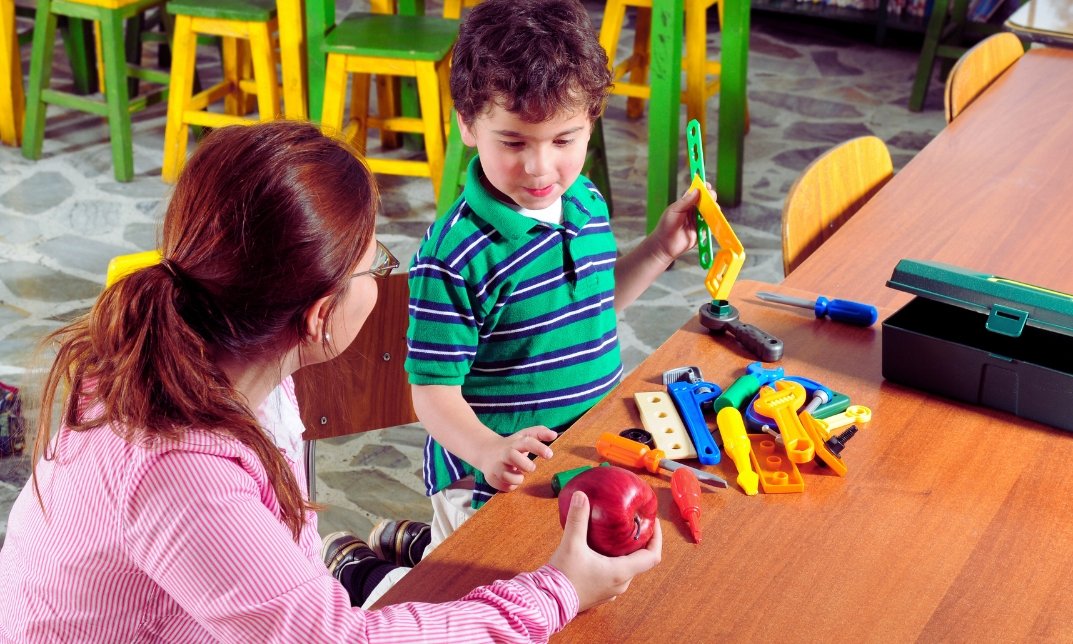No products in the cart.
If you’ve ever watched a busy classroom and wondered how the teacher keeps everything running smoothly — meet the teaching assistant. A TA is the quiet hero of the room: the person who helps pupils learn, keeps lessons on track, and makes sure no child is left behind.
So, what is a teaching assistant really? They’re classroom professionals who support teachers, guide small groups, help with special educational needs, and create calm, focused learning spaces. It’s a role that combines patience, communication, and genuine care — perfect for anyone who wants to make a difference every day.
The best part? You don’t need a degree to start. There are flexible routes into the role, including the Level 3 Teaching Assistant apprenticeship, where you can earn while you learn. In this guide, we’ll explore teaching assistant roles, training paths, and exactly how to become a teaching assistant in the UK — step by step.
1. What Is a Teaching Assistant?

A teaching assistant is the steady hand in every classroom — the person who makes sure learning keeps moving, no matter what the day brings. They support pupils of all abilities, across every subject, helping them understand lessons, stay focused, and feel confident to try.
So, what does a teaching assistant do exactly? They work alongside teachers to prepare materials, guide small groups, and give extra help to pupils who need it most. They notice the quiet struggles, celebrate small wins, and make sure every child feels included.
In simple terms, a teaching assistant keeps the classroom calm, organised, and full of possibility — turning ordinary lessons into real moments of progress. That’s what makes the role so special.
2. What Does a Teaching Assistant Do Each Day?
Every school day looks a little different for a teaching assistant — and that’s part of the fun. Some moments are calm and focused; others are busy and unpredictable. But every day, a TA makes learning possible.
Supporting Pupils One-to-One and in Small Groups
TAs spend a lot of time helping pupils understand new ideas — whether it’s reading together, practising maths, or breaking down tricky instructions. This one-to-one and small-group support helps every child make real progress.
Preparing Lessons and Keeping Things Running Smoothly
Before lessons start, teaching assistants help get everything ready — worksheets printed, resources organised, and the classroom set up. During lessons, they keep activities flowing and lend a hand whenever the teacher needs support.
Encouraging Good Behaviour and Calm Routines
A big part of teaching assistant responsibilities is helping pupils stay focused. TAs use gentle reminders, clear routines, and positive praise to create a calm, happy classroom where everyone can learn.
Communicating and Safeguarding
At the end of each session, TAs give quick feedback to the teacher — who struggled, who excelled, and what worked best. They’re also alert to safeguarding concerns, always following the “notice, record, report” rule to keep children safe.
That’s what teaching assistants do — they connect all the small moments that make a classroom run. Behind every good lesson, there’s usually a great TA quietly helping it all come together.
3. What Types of Teaching Assistants Are There?
There isn’t just one kind of teaching assistant. Schools have a range of teaching assistant roles, depending on pupil needs and staff structure. Duties and pay often increase with responsibility, experience, and qualifications.
Classroom Teaching Assistant
A classroom TA supports the teacher with everyday learning activities — helping pupils stay on task, preparing materials, and assisting with small-group or one-to-one work. They play a key part in keeping lessons running smoothly and supporting progress across all subjects.
SEN Teaching Assistant
A SEN teaching assistant works closely with pupils who have special educational needs or disabilities (SEND). They may adapt activities, provide emotional or sensory support, and help pupils follow their individual education plans (IEPs or EHCPs). This role often requires additional training and a calm, flexible approach.
Higher Level Teaching Assistant (HLTA)
A higher level teaching assistant is an experienced TA who meets national HLTA standards. HLTAs can lead small-group learning, cover classes under teacher direction, and support lesson planning or assessment. With more responsibility comes a higher pay grade and stronger career progression opportunities.
Each of these roles plays a vital part in supporting pupils and teachers alike. Whether you’re helping a whole class or focusing on one child, every TA contributes to creating an inclusive, engaging, and well-organised learning environment.
4. What Skills Make a Good Teaching Assistant?

If you want to know how to be a good teaching assistant, it’s less about having fancy qualifications and more about the right mix of everyday people skills. The best TAs are calm, kind, and quietly organised — the ones who help learning happen without ever needing the spotlight.
Patience
Children learn at different speeds. A good TA waits, re-explains, and stays calm — even when the class feels a bit wild. Patience turns frustration into progress.
Empathy
Empathy means seeing things from a pupil’s point of view. When a child is upset or struggling, an empathetic TA listens first — and that simple moment of understanding can completely change their day.
Communication
Clear, kind communication helps everyone — pupils, teachers, and parents. A TA who explains instructions simply or passes feedback clearly keeps the classroom running like clockwork.
Teamwork
Teaching is never a one-person job. Great TAs work closely with teachers, stepping in when needed, sharing ideas, and always putting pupils first.
Organisation
From printing worksheets to setting up group tables, small details make a big difference. A well-organised TA helps lessons flow smoothly — saving time and reducing stress for everyone.
Basic ICT Skills
Modern classrooms rely on tech. Knowing how to use tablets, interactive boards, or online learning tools helps a TA support both teachers and pupils with confidence.
These teaching assistant skills are what turn good days into great ones. If you’re wondering what you need to be a teaching assistant, start with these — because kindness, calm, and consistency will always stand out.
5. What Qualifications Do You Need to Be a Teaching Assistant?
If you’ve ever wondered what qualifications do I need to be a teaching assistant, the good news is — you don’t need a degree. Most schools want solid English and maths, a caring mindset, and a recognised TA qualification to show you’re classroom-ready.
Want a full breakdown of every qualification route? Read Open Learning Academy’s guide — it explains what you really need (and what you don’t) to become a confident, job-ready teaching assistant.
6. Can You Train to Be a Teaching Assistant Online?
Absolutely — you can complete Level 2 or Level 3 teaching assistant courses online, making it easier to train around work or family life. Most online TA qualifications include tutor support, flexible deadlines, and self-paced learning, so you can study whenever it suits you.
If your course includes practical elements, you’ll usually gather evidence in a school setting — either through observations, supervisor statements, or short placement hours. This helps you apply what you’ve learned and build real classroom confidence.
For anyone wondering how to train to be a teaching assistant without stepping into college full-time, online learning is the ideal route. Platforms like Open Learning Academy offer Ofqual-recognised teaching and training courses and CPD modules in safeguarding, behaviour, and SEN — all designed to help you qualify faster, grow your skills, and stay classroom-ready.
6. Can You Train to Be a Teaching Assistant Online?
Yes — you can! Many Level 2 and Level 3 teaching assistant courses are now available online, giving you the freedom to study at your own pace with full tutor support. It’s a flexible way to gain a recognised qualification while managing work or family life.
For courses that include practical units, you’ll usually complete some in-school evidence — through short placements, observations, or supervisor reports. This real classroom experience helps you build confidence alongside your online learning.
If you’re ready to get started, explore the Teaching & Training courses at Open Learning Academy. This category includes trusted CPD modules and full TA qualifications — from safeguarding and SEN support to behaviour management — everything you need to train as a teaching assistant online and grow your career in education.
7. How Much Do Teaching Assistants Earn in 2025?
Most teaching assistants in UK schools are paid on local council scales. Typical hourly rates sit around £12–£15 (higher in London). Full-time equivalents are usually £20k–£26k, rising to £25k–£32k for HLTAs or specialist roles. Remember: many posts are term-time only, so annual pay is pro-rata.
If you’d like a clear breakdown of teaching assistant salaries, grades, and hourly rates, check out this detailed guide called “How Much a Teaching Assistant Earns in the UK: Latest Figures” from Open Learning Academy. It explains pay scales across the UK, what influences your earnings, and how extra training can help you move up faster.
8. Where Do Teaching Assistants Work?

Teaching assistants are the heartbeat of schools — quietly keeping everything running and making sure pupils get the support they need. You’ll find them in all kinds of settings, each with its own rhythm and rewards.
Here’s where you might work:
- Primary Schools:
Help pupils with reading, writing, and early maths. You’ll guide phonics groups, listen to readers, and celebrate those “lightbulb” moments.
- Secondary Schools:
Support across subjects or departments — from English to science. You might help pupils stay on track in lessons or prepare for exams and access arrangements.
- Nurseries & EYFS (Early Years):
Create safe, playful spaces where children explore, share, and start their learning journey with curiosity and confidence.
- Special Schools (SEN):
Work closely with pupils who have additional needs, using visual aids, calm routines, and sensory-friendly tools to help every child thrive.
- Colleges & Alternative Provisions:
Support older learners or those needing extra guidance, helping them build independence and life skills.
No matter the setting, every teaching assistant job is about connection — helping pupils feel safe, seen, and supported every single day. Whether you’re drawn to primary teaching assistant roles or prefer secondary classrooms, there’s a place for you to make a real impact.
9. How Is a Teaching Assistant Different from a Teacher?
Teachers and teaching assistants might share the same classroom, but their roles are wonderfully different — and both are essential. The teacher leads the learning, while the TA makes sure every pupil can join in confidently and successfully.
Teachers Lead the Learning
Teachers are responsible for planning lessons, setting learning goals, marking work, and assessing progress. They create the structure, deliver the teaching, and ensure pupils are meeting national curriculum standards.
Teaching Assistants Support the Learning
TAs bring those plans to life. They help pupils understand tasks, manage behaviour calmly, prepare resources, and provide one-to-one or small-group support when needed. Their focus is on helping every child feel included and capable.
Different Roles, Same Goal
Teachers carry overall accountability for learning outcomes. TAs work under their direction, supporting both the teacher and the pupils to keep the classroom running smoothly.
So, it’s not teaching assistant vs teacher — it’s teamwork. Together, they build a learning environment where every child feels safe, supported, and ready to shine.
10. What Career Progression Can Teaching Assistants Expect?
Working as a teaching assistant can be the start of an exciting career in education. Whether you love classroom support or want to move into teaching, there are plenty of ways to grow and specialise.
Step 1: Build Your Foundation
Most people begin as a Level 2 Teaching Assistant, developing core classroom skills and confidence. From there, moving up to Level 3 Supporting Teaching and Learning gives you greater responsibility — such as leading small groups and supporting planning.
Step 2: Progress to Higher Level Teaching Assistant (HLTA)
With experience and a Level 3 qualification, you can apply to become a Higher Level Teaching Assistant (Level 4). HLTAs can lead lessons in the teacher’s absence, deliver interventions, and earn a higher pay grade. It’s a great step for anyone who enjoys leading learning while still working closely with pupils.
Step 3: Specialise in SEN or Pastoral Support
Some TAs move into specialist roles, such as SEN Support, ELSA (Emotional Literacy Support Assistant), or behaviour mentor. These positions focus on helping children with additional needs, emotional wellbeing, or learning barriers — making a direct impact every day.
Step 4: Train to Become a Teacher
If you want to take the next leap, you can transition into teaching through routes like QTS, PGCE, or the teacher apprenticeship. Your classroom experience as a TA gives you a huge advantage — you already understand pupils, routines, and real-world teaching.
From classroom support to leading your own lessons, TA career progression can take you as far as you want to go. Whether your goal is to become a Higher Level Teaching Assistant or even a qualified teacher, every step builds your skills, confidence, and impact in education.
11. Why Teaching Assistants Are So Important
- They help pupils “get it.” When a child finally understands something new, it’s often thanks to a TA’s calm support and patient guidance.
- They build confidence. TAs give pupils the courage to try again, take small risks, and believe in themselves — even on tough days.
- They keep lessons flowing. From preparing materials to helping with group work, TAs make sure learning stays smooth and focused.
- They notice the little things. A good TA spots when a child is anxious or distracted, offers quiet reassurance, and celebrates small wins.
- They promote inclusion. TAs make every pupil feel seen and valued, especially those who need extra help or encouragement.
- They support wellbeing. Their calm presence helps create safe, positive classrooms where children feel cared for and ready to learn.
- They make lasting impact. The benefits of teaching assistants go beyond grades — they help shape confident, kind, and resilient learners.
If this sounds like the kind of difference you want to make, explore the Teaching Assistant Course at Open Learning Academy. It’s designed to give you the knowledge, skills, and confidence to become that calm, capable presence every classroom needs.
FAQs
What is the role of a teaching assistant?
A teaching assistant supports the teacher, helps pupils learn, manages behaviour, and keeps lessons organised — making sure every child feels included and able to make progress.
How much is a TA paid in the UK?
Most TAs earn between £20,000–£26,000 full-time, or £12–£15 an hour. Pay varies by council, experience, and whether you work term-time or as a Higher Level Teaching Assistant (HLTA).
What are the duties of a teacher assistant?
TAs prepare resources, support lessons, work with small groups, assist SEN pupils, manage routines, and provide quick feedback to teachers — keeping learning calm, focused, and productive.
What qualities do you need to be a teaching assistant?
Great TAs are patient, kind, organised, and good communicators. They stay calm under pressure, listen carefully, and help every child feel safe, valued, and capable.
Can I be a TA with no experience?
Yes. You can start by volunteering in schools or studying a Level 2 Teaching Assistant course. Hands-on experience and CPD will quickly build your confidence.
What makes the best TA?
The best TAs anticipate needs, communicate clearly, and show empathy. They’re calm, reliable, and always ready to help pupils and teachers succeed together.
What should a TA not do?
TAs shouldn’t take over teaching or ignore safeguarding concerns. Always follow the teacher’s plan, respect pupil boundaries, and report issues to the Designated Safeguarding Lead (DSL).
Is becoming a TA hard?
It’s rewarding but busy. You’ll juggle prep, support, and communication — but good teamwork, clear routines, and patience make the role enjoyable and fulfilling.
How to handle disruptive behaviour in the classroom?
Stay calm, use short instructions, and praise positive actions. Follow the school’s behaviour policy and always model the calm tone you want pupils to copy.




